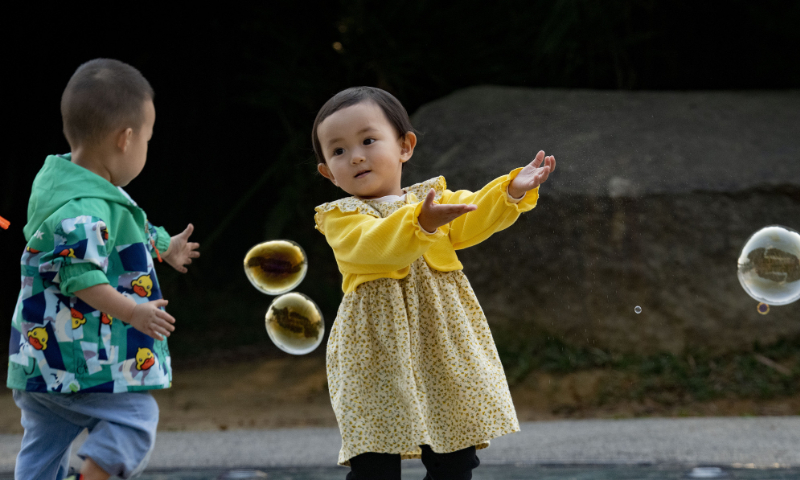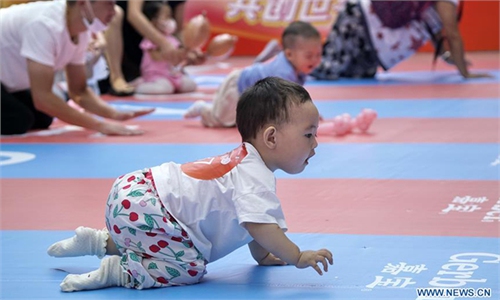Political advisor proposed to include all assisted reproductive technologies in the country’s medical insurance

Children are playing by the Wanquan River in Qionghai city, South China's Hainan Province on February 16, 2023. Photo: VCG
A Chinese political advisor proposed to include all assisted reproductive technologies in the country's medical insurance, a move to boost the declining birth rate.
According to statistics, China has more than 50 million couples who suffer from sterility infertility, accounting for 12.5 to 15 percent of the population of child bearing age, An Ting, chairman of the board of performing arts company Beijing Chic-Pia International Culture Development, and also a member of the 14th National Committee of the Chinese People's Political Consultative Conference (CPPCC), told the Global Times.
Chinese authorities announced in February the inclusion of labor analgesia and assisted fertility technology in the coverage of medical insurance. Yet An said such a policy may be impeded by big discrepancies of local government's medical insurance balances; and different execution of the policies.
Thus An suggested the department of finance and social insurance should take the lead to push for inclusion of all assisted reproductive technologies in China's medical insurance. At the same time, relevant government bodies should decide pricing of assisted reproductive services.
Provinces and regions should also make up apportionment ratio in accordance with their medical insurance balance, and ask for national fund for supporting birth to cover the shortage, An proposed.
The country should also intensify the expansion of medical institutes that provide assisted reproductive services, as current institutes cannot meet the surging demands, said An.
In recent years, 300,000 babies were born thanks to assisted reproductive technologies in China. However, 2018 statistics show that 568,000 people received assisted reproductive technologies, accounting for only 1.2 percent of infertile couples that year. The high cost of covering such technologies is the major reason that kept out most patients, said An.
As early as March 26, 2022, Beijing took the lead in adopting assisted reproductive technology into the medical insurance. A total of 16 assisted reproductive technologies, including intrauterine artificial insemination, embryo transfer and sperm selection, were covered by the healthcare, making Beijing the first city in China to include assisted reproductive technology in the medical insurance.
Boosting birth rate has become a focal topic on this year's two sessions, after data released by the National Bureau of Statistics of China in January showed that population in the Chinese mainland fell for the first time in 61 years in 2022, decreasing by a total of 850,000.
At least 20 political advisors and legislators submitted suggestions on boosting the birth rate, according to media calculation. He Dan, another member of National Committee of the CPPCC, and an official from China Population and Development Research Center, even suggested to shorten the school year of primary to high school years from 12 years to 10 years, so that college graduates can have two more years to give birth.
Some political advisors and legislators also called for financial incentives for couples who have more than one child, in order to relieve the financial burden of raising children.


